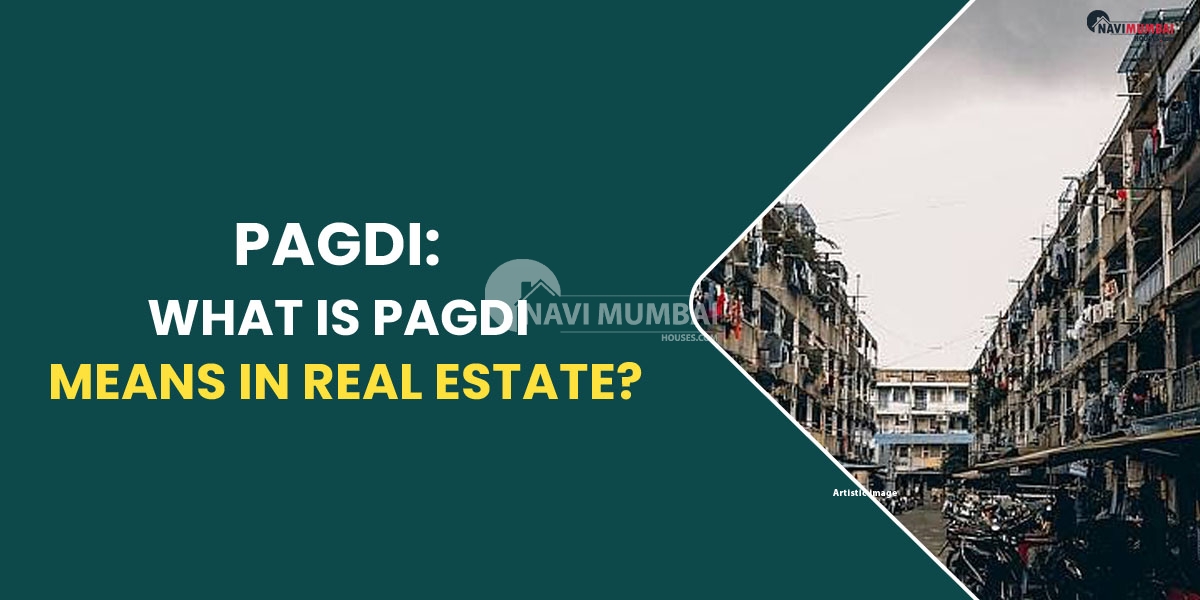
- August 25, 2022
- News
Pagdi: What Is Pagdi Means In Real Estate?
In India, the pagdi system of tenancy is prevalent. Similar to conventional rental agreements, it also involves a tenant and a landlord; the only distinction is that the renter also owns a share of the property and has the authority to sublet and sell it. Continue reading to learn more about the Pagdi system and its significance in real estate. The Pagdi method differs somewhat from the standard rental arrangement. Even though it is a rental model that is commonly use in India. In this case, the tenant is also a co-owner of the property. And only pays a small rent amount in comparison to market “ask” rates. Additionally, the renter has the ability to sublet and sell the property.
Are you looking flats for sale in nalasopara?
Let’s use the following example to better understand how the Pagdi system works:
Take the instance of A and B, two parties. B is the renter, and A is the landlord. In this case, A owns a property that B is considering purchasing.
The Pagdi rental model stipulates that B would give A, commonly known as Pagdi, a lump sum principal payment. In return, A would guarantee that B receives 60–70% cheaper monthly rents and co-ownership of the property, subject to certain terms and circumstances.
The tenant has the right to sublet or sell the property after a predetermined time period since they are a co-owner. However, when a property is sublet, the previous tenant and the owner split the rental money, often 35:65. In contrast, the tenant receives the remaining money from the sale of the property after the owner retains about 30 to 50 percent of the proceeds. This clause guarantees the owner’s earnings and lessens tax ramifications.
The Pagdi renting model is currently use extensively in Mumbai, Kolkata, and Delhi’s micro markets. More than 7.5 lakh residences in Mumbai are reportedly part of the Pagdi system. Pagdi tenants occupy a significant portion of space in neighbourhoods. Including Colaba, Dadar, Worli, Mahim Fort, Parel, Lalbagh, Sewri, Warden Road, and Peddar Road.
Both the issue and government initiatives
The Mumbai government has recently become extremely concerned about the Pagdi concept because to the numerous problems associated with the rebuilding of such structures.
Even though the market pricing for a 1 BHK apartment ranges between Rs 30,000 & Rs 65,000 per month, Pagdi leased flats may be found in several South Mumbai neighbourhoods for as little as Rs 500–1,000 per month. The landlords are still discourage from maintaining the structures because these buildings only command low rentals.
As a result, the Maharashtra Rent Control Act, 1999, has been subject to numerous proposals from the State government. According to the proposal, Pagdi-controlled properties larger than 547 square feet and 847 square feet must pay rent at rates that are more than 200 times more than those that are presently being paid.
When the State administration decided to phase out the previous system in favour of the Central Government’s proposed Model Tenancy Act. Tenants living in large flats in Mumbai fought back fiercely.
The Brihanmumbai Municipal Corporation (BMC) in 2019 announced reduce additional Floor Space Index (FSI) for developers wanting to redevelop Pagdi structures. Due to the fact that the majority of Pagdi buildings are deteriorate and may collapse. Additionally, the Development Control & Promotion Regulations (DCPR) encouraged the FSI and allowed developers to get 60–70% of the FSI incentive for renovating 2–5 or more Pagdi properties.
The RERA’s provisions
The Real Estate (Development and Regulation) Act of 2016 (RERA) will be expand to include abandoned. And decaying buildings managed by the Pagdi renting model, giving tenants the same protections as homeowners. The Maharashtra Housing & Area Development Authority (MHADA), which receives taxes from these buildings, intends to assume responsibility for redeveloping these regions to prevent accidents.
Tenants can nonetheless seek protection under the Act even though such structures are outside the scope of RERA provided the builder registers the project all at once rather than in phases. The majority of builders registers the project in stages & keeps the free-sale blocks and the restoration portion separate in an effort to avoid the RERA requirements.
The British Raj left behind the Pagdi renting system, which is still widely use today. It is hoped that the Government will be successful in putting regulations in place to help Pagdi residents receive their just compensation, though tenant- and buyer-oriented acts are making Indian real estate increasingly transparent & approachable.
TOP 3 FLATS For sale In Mumbai |
You’re looking for Rent Homes in Kandivali we have the Best Properties In Mumbai Like Ready to Move:https://navimumbaihouses.com/property/search/buy/kandivali/
If you want daily property update details please follow us on Facebook Page / YouTube Channel / Twitter









